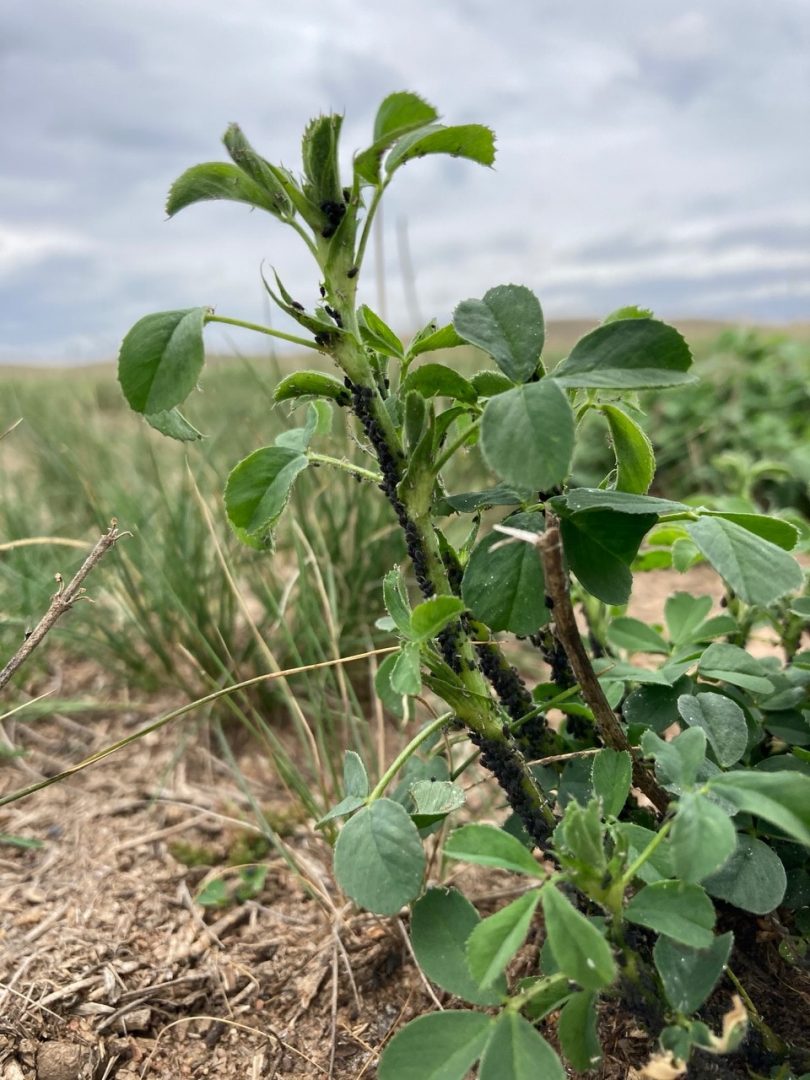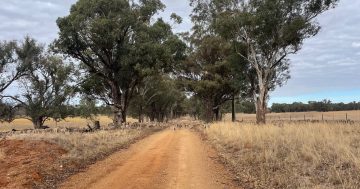
A warning has been issued to farmers grazing lucerne to check for cowpea aphids. Photo: Supplied.
A warning has been issued to farmers in the Monaro region to check their animals and lucerne plants following numerous reports of severe photosensitisation in ewes and lambs last week.
Cowpea aphids that contain a photodynamic fluorescent pigment are responsible for the photosensitisation, which can cause toxic effects in stock exposed to the plants they are feeding on.
While commonly reported on vetch crops as well as faba beans, chickpeas and lupins, medics including lucerne are also affected by the aphid.
Local Land Services was contacted by graziers from across the district who described their animals showing inflammation and scabbing around the eyes, ears and muzzles consistent with photosensitisation.
“Investigation of these reports has identified the presence of cowpea aphids in very high populations on lucerne plants within each of the paddocks,” said South East Local Land Services senior agricultural advisor Jo Powells.
“Cowpea aphids are shiny black with white and black legs. The nymphs are a dull grey and non-winged nymphs are black and shiny.

Cowpea aphids can cause toxic effects in stock exposed to the plants they are feeding on. Photo: Supplied.
“They congregate along plant stems and under their leaves where they suck on the sap of the plant. We are strongly encouraging land managers to check their lucerne for the presence of these aphids.
“If significant numbers are present, we recommend removing stock from these paddocks until the aphid numbers can be controlled or begin to reduce.”
Dr Petrea Wait, District Veterinarian for the Monaro, is concerned by the rapid onset of the photosensitisation.
“We are seeing cases of a very severe form of photosensitisation in these sheep,” she said. “The effects are being seen in all classes of sheep, including very young lambs, and we urge producers to check any sheep [that are] grazing lucerne.
“Signs of the disease include inflammation of the areas not covered by fleece, particularly the face, but also the udder of lactating ewes.
“These areas of inflamed skin progress to thick, crusted lesions of the muzzle, around the eyes and the ears.
“Some sheep are being blinded by the extreme swelling of their eyelids, are unable to eat due to lip lesions, or develop mastitis secondary to udder inflammation.
“Lamb mortalities are also increased in these mobs.”
Affected sheep appear to recover quickly if they are promptly removed from the lucerne crop and provided with shade. Some severely affected sheep might need further veterinary treatment, including pain relief if they are unable to eat, or antibiotic therapy if they develop secondary infections.
Aphid control options are available so consult your local agronomist. You can find more information about symptoms and treatment options in the NSW DPI fact sheet.







